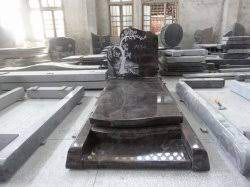For monuments made from marble or granite, there are several means in the manufacturing system. In the first place, slabs of marble or granite are cleaned using a special machine that utilizes large metal circles and silicon carbide blocks. This cycle delivers a serious shine finish and mirror-like appearance. Then, the slab is cut into the ideal shape using a guillotine. Trained craftsmen then finish the unpleasant edges of the monument. Monuments may be cleaned on all four sides or left unpleasant.
The course of granite monuments is a complex one. Granite is a thick, crystalline stone made primarily out of quartz and feldspar. Other minerals are scattered all through the stone. This combination makes granite monuments incredibly strong and durable. They won't be obliterated by a tornado or a falling tree branch. They will remain looking great for hundreds of years to come, because of their ability to oppose weather and air damage. фотокерамика на памятник
The course of marble and granite monuments manufacturing began in 1846 in Westerly, Rhode Island. The city became a major community for the manufacturing of fine-grained granite. In the following decades, 1000s of individuals were utilized in granite processing. However, as building materials surpassed the utilization of brownstone in monuments, granite was becoming the favored material. Aside from its sturdiness, marble and granite monuments can be engraved with a meaningful message.
In spite of the many advantages of natural stone monuments, slate is a common material for gravestones. Slate is easy to carve and is often featured with white gliding. Unfortunately, slate is permeable and disintegrates over the long run. Among the earliest memorials, fieldstones are the easiest and most basic forms of grave markers. These are decorated with an awl and include the deceased person's name and age.
While both marble and granite are utilized for memorials and other purposes, the two stones contrast in their hardness. Marble is harder and more durable than granite, yet is considerably more costly than granite. It is made of quartz, mica, and feldspar. The grain of granite is irregular, making it hard to finish and cut. Granite, on the other hand, can last for hundreds of years and can be easily repaired by talented craftsmen.
There are four main kinds of memorials available: gravestones, cushion markers, upstanding headstones, and single or companion monuments. Monuments are also available in various tones, like black, red, blue pearl, or multicolor. Their finishes are honed, cleaned, ground, or chised. They are also available as carved and scratched monuments. The final decision on which monument to purchase ought to be based on the inclinations of the family and the style of the memorial.
The stone industry was strong to the point that a law was passed to make it against the law to create a monument not made of stone. While this ruling was temporarily in place, the zinc monument industry thrived. During WWI, metal became more valuable and was utilized for monuments. Many zinc monuments actually stand on village greens in 31 of the 48 states. Their blue gray variety offers their construction. On the off chance that you're planning to purchase one, make certain to consider the cost of the material.

No comments:
Post a Comment